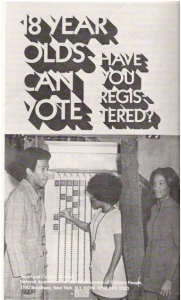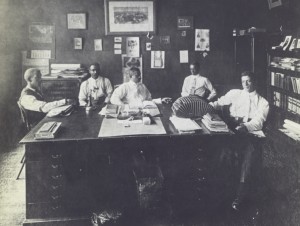
Black History, Inventions, Other

The Black Thomas Edison
Granville T. Woods (April 23, 1856 – January 30, 1910), was an African-American inventor who held more than 60 patents. Most of his work was on trains and street cars. Woods also invented the Multiplex Telegraph, a device that sent messages between train stations and moving trains. Born in Columbus, Ohio, on April 23, 1856, Granville T. Woods dedicated his life to developing a variety of inventions relating to the railroad industry.
Granville T. Woods literally learned his skills on the job. Attending school in Columbus until age 10, he served an apprenticeship in a machine shop and learned the trades of machinist and blacksmith. During his youth he also went to night school and took private lessons. Although he had to leave formal school at age ten, Woods realized that learning and education were essential to developing critical skills that would allow him to express his creativity with machinery.
In 1872, Woods obtained a job as a fireman on the Danville and Southern Railroad in Nebraska, eventually becoming an engineer. He invested his spare time in studying electronics. (more…)
Black History, Civil Rights, Other


 The NAACP’s official organ, The Crisis Magazine, carried information on young people and encouraged formation of youth units for a number of years before any action was taken to form a division in the Association devoted to youth activities. In 1935, during the St. Louis Convention, a fiery address was made by one of the youth delegates, Miss Juanita Jackson, to create a department for youth.
The NAACP’s official organ, The Crisis Magazine, carried information on young people and encouraged formation of youth units for a number of years before any action was taken to form a division in the Association devoted to youth activities. In 1935, during the St. Louis Convention, a fiery address was made by one of the youth delegates, Miss Juanita Jackson, to create a department for youth.
Subsequently, on September 15, 1935, Miss Jackson joined the Association’s staff and became the first Youth Secretary. The NAACP National Board of Directors passed a resolution formally creating the Youth and College Division in March of 1936. Under the guidance of Ms. Jackson, a National Youth Program was created for youth members of the NAACP. This program provided national activities for youth that were supported by monthly meetings discussing local needs of the community. The major national youth activities were demonstrations against lynching and seminars and group discussions on the inequalities in public education. (more…)

Black History, Business, Other

Officers of the North Carolina Mutual Life Insurance Company in 1911
Since its beginning in 1898, North Carolina Mutual Life Insurance Company has grown to become one of the nation’s most widely-known and successful business institutions. It is the only insurance company domiciled in North Carolina with a charter dated before 1900. North Carolina Mutual is the oldest and largest African American life insurance company in the United States.
The Company’s seven organizers were men who were active in business, educational, medical and civic life of the Durham community. An early financial crisis tested their resolve and the company was reorganized in 1900 with only John Merrick and Dr. Aaron M. Moore remaining. Charles C. Spaulding was named General Manager, under whose direction the company grew and achieved national prominence. (more…)

Black History, Other, Politics

Arthur Spingarn
Arthur Barnette Spingarn (1878-1971) was an American leader in fight for civil rights for African Americans.
Spingarn was born into a well-to-do family. He graduated from Columbia College in 1897 and from law school in 1899. He was one of a small group of white Americans who decided in the 1900s (decade)to support the radical demands for racial justice being voiced by W. E. B. Du Bois in contrast to the more ameliorative views of Booker T. Washington. He served as head of the legal committee of the National Association for the Advancement of Colored People (NAACP) and one of its vice-presidents starting in 1911. (more…)

Black History, Other, Politics

Image courtesy of National Archives and Records Administration
Representative, 1973-1979, Democrat from California
Yvonne Brathwaite Burke was a rising star in California and national politics years before she won a seat in the U.S. House. In 1966, she became the first African-American woman elected to the California assembly. At the 1972 Democratic National Convention she served as vice chair of the platform committee, gaining national television exposure. That same year she became the first black woman from California (and one of only three black women ever) elected to the House.
Her meteoric career continued with a prime appointment to the Appropriations Committee and her election as the first woman chair of the Congressional Black Caucus (CBC). But Burke’s most notable distinction in the eyes of much of the public occurred in 1973, when she became the first Congresswoman to give birth and be granted maternity leave while serving in Congress. (more…)
Black History, Other
The Harlem Renaissance was an intellectual, social, and artistic explosion centered in Harlem, Manhattan, New York City, spanning the 1920s. At the time, it was known as the “New Negro Movement”, named after The New Negro, a 1925 anthology edited by Alain Locke. The movement also included the new African-American cultural expressions across the urban areas in the Northeast and Midwest United States affected by the Great Migration, of which Harlem was the largest.
Though it was centered in the Harlem neighborhood, many francophone black writers from African and Caribbean colonies who lived in Paris were also influenced by the movement,which spanned from about 1918 until the mid-1930s. Many of its ideas lived on much longer. The zenith of this “flowering of Negro literature”, as James Weldon Johnson preferred to call the Harlem Renaissance, took place between 1924—when Opportunity: A Journal of Negro Life hosted a party for black writers where many white publishers were in attendance—and 1929, the year of the stock-market crash and the beginning of the Great Depression. The Harlem Renaissance is considered to have been a rebirth of the African-American arts.








